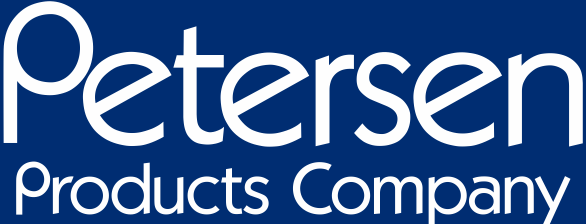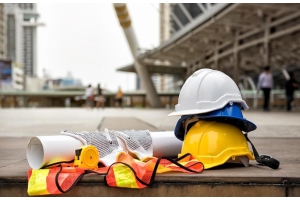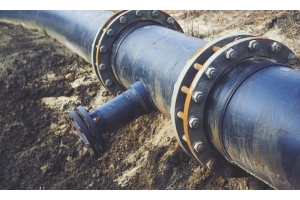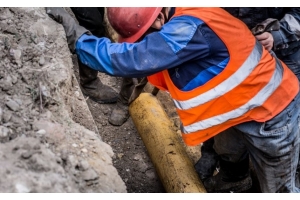Why Choose Smoke Testing Over Traditional Methods for Finding Plumbing Leaks?


Early detection of plumbing leaks is essential to avoid expensive repairs and significant water damage. Traditionally, plumbers have used various methods to identify leaks, including visual inspections, pressure tests, and even listening devices. These techniques, while effective to some extent, can sometimes miss small or hidden leaks that could cause problems later.
Enhancing plumbing leak detection procedures hands down revolves around smoke testing. Not only does smoke testing find leaks that other methods might miss, but it also offers the quickest and most precise detection. This makes it a top tool in modern plumbing.
Overview of Traditional Leak Detection Methods
Traditional methods for detecting plumbing leaks have been used for many years and are still popular today. The techniques range from basic visual checks to more complex methods like as pressure testing and sound detection. While they can help find leaks, each method has its own set of limitations. Here's a closer look at how these techniques work and their potential drawbacks:
- Visual Inspection - Visual inspection is a straightforward method for detecting leaks. It involves checking for apparent leaks such as damp spots, water stains, mold, or mildew on walls, ceilings, or floors. This method is useful for detecting obvious leaks but it heavily relies on the leak being visible and accessible, which is not always the case.
- Pressure Testing - Pressure testing involves monitoring the pressure within a plumbing system. Plumbers pressurize the pipes and then monitor the system for pressure drops which could indicate a leak. Although this technology detects leaks it does not specify their exact location. This makes it less effective at identifying the problem area.
- Acoustic Leak Detection - This technique used advanced sound equipment which detects the noise of water escaping pipelines. Plumbers utilize sensitive microphones and other tools to detect the distinct sound of a leak, even if it is deep within the system. Although this method is successful for discovering hidden leaks, it needs skill and can be time-consuming.
Drawbacks of Traditional Leak Detection Methods
Traditional methods for detecting leaks have drawbacks. One of the reasons why it can be tedious is when the leak is concealed or hard to find. The use of pressure tests for instance, can be intrusive and also need extra labour in determining the precise location of a leak after it has been found out. In addition, these methods may miss out on small or minor leaks that could lead to major damages later on when left unattended.
Plumbing Smoke Test for Detecting Leaks
Smoke testing is a highly effective way to detect leaks in plumbing systems. The fundamental concept of smoke testing is to introduce non-toxic, pressured smoke into the plumbing system. This is done with specialized equipment that produces smoke and drives it into the pipes. As the smoke moves through the system, it escapes through any leaks, cracks, or holes in the pipes.
The smoke test fluid is used to create the smoke, which is then introduced into the system using smoke bombs or other devices. As the smoke moves through the system, it escapes through any leaks, cracks, or holes in the pipes. Because smoke is visible, it gives a clear and immediate indicator of where leaks are taking place. This technology allows plumbers to locate the specific site of the problem with great precision. Smoke test for plumbing is particularly useful for discovering leaks that are hidden or difficult to access, which makes it an important tool in modern leak detection techniques.
Advantages of Smoke Test for Plumbing Leak Detection Over Traditional Methods
Smoke testing has various advantages over traditional leak detection methods. It is designed to be little disruptive, quick, and highly precise These advantages add to its total cost-effectiveness, making it a viable choice for both residential and commercial plumbing systems. Here's a closer look at the main benefits of smoke testing.
- Non-Invasive - Smoke testing is a non-invasive method which causes minimal interruption to your property. Unlike certain traditional methods which require exposing walls or floors, smoke testing can be done with minimal physical changes to your property. This makes it a less disruptive way to find leaks.
- Speed and Efficiency - One of the key benefits of smoke testing is its speed and efficiency. The method is often faster than traditional approaches, which allows plumbers to detect leaks more quickly. This not only saves time, but also reduces the duration of any difficulty produced by the testing procedure.
- Accuracy - Smoke testing is highly accurate to detect even minor leaks which can not be detected by other leak detection techniques. The visibility of the smoke allows you to locate the exact position of leaks, ensuring that no problem goes undetected. This exact identification helps in the prompt and successful repair of leakages.
- Cost-effectiveness - Smoke testing can save money over time. It saves time and money on repairs by detecting leaks fast and precisely. This can result in significant savings on both labor costs and prospective repair prices, which makes it a worthwhile investment in leak detection.
When to Use Smoke Testing For Plumbing?
Smoke testing is a versatile technique which can be used in various situations to ensure the reliability of plumbing systems. Whether you're maintaining an existing system, checking repairs, or installing new equipment, smoke testing offers useful insights and peace of mind. Here's when it is especially useful:
- Routine Maintenance - Smoke testing during routine maintenance checks can avoid significant plumbing issues. By identifying potential leaks early on, you can address issues before they get worse, reducing the chance of major damage and costly repairs.
- Post-Repair Verification - After finishing plumbing repairs, smoke testing is a great way to make sure that all leaks have been properly sealed. This guarantees the repair was successful and helps to avoid future problems caused by unresolved leaks.
- New Installations - Smoke testing is highly recommended for newly installed plumbing systems to make sure that the system is properly sealed and working as intended. Testing new installations before use allows for the early detection of any leaks or flaws, assuring a reliable and trouble-free operation from the start.
Conclusion
The following are the benefits of smoke testing plumbing leaks including non-invasiveness, speed, accuracy and low cost. Using smoke testers, smoke test fluid and smoke bombs, plumbers can easily locate leaks that are either hidden or difficult to access.
Such a groundbreaking device not only makes detection processes faster but also prevents larger damages and repairs in future. Generally speaking, this leak detection method using smoke may be used to enhance the process of finding leaks as well as ensuring the durability of plumbing systems.
Disclaimer: Use any product or process in accordance with all applicable laws, including federal, state, and local regulations, and with manufacturer-specified instructions.
FAQs
What is smoke testing in plumbing?
Smoke testing in plumbing is a leak detection method where non-toxic smoke is introduced into the plumbing system under pressure. This smoke escapes through any leaks, cracks, or openings, making it easy to spot problem areas in the pipes. This technique is highly effective, precise, and non-invasive, making it a popular choice for identifying hidden leaks.
When should smoke testing be used in plumbing?
Plumbing Smoke testing can be used for routine maintenance, after repairs to ensure all leaks have been sealed or during new plumbing installations to verify all systems are leak-free from day one. By early detecting hidden leaks early, smoke testing helps detect costly water damage repairs before they become more extensive repairs later.
How does smoke testing save on repair costs?
Smoke testing can reduce repair costs significantly by quickly and accurately locating leaks, thus shortening repair times and labor requirements. Identifying early leaks also helps avoid more extensive water damage that would necessitate costly repairs later.
How long does a plumbing smoke test take for plumbing?
A smoke test typically only requires several hours, depending on the size and configuration of your plumbing system. It is quicker than traditional methods, providing effective leak detection with minimal disruption to property owners.
Can Plumbing smoke testing find small or hidden leaks?
Absolutely. Smoke testing is an invaluable way to discover even small or hidden leaks that might otherwise go undetected using traditional methods. Since smoke travels through every part of a plumbing system, even minor leaks are revealed allowing accurate diagnosis that enables long-lasting repairs.






